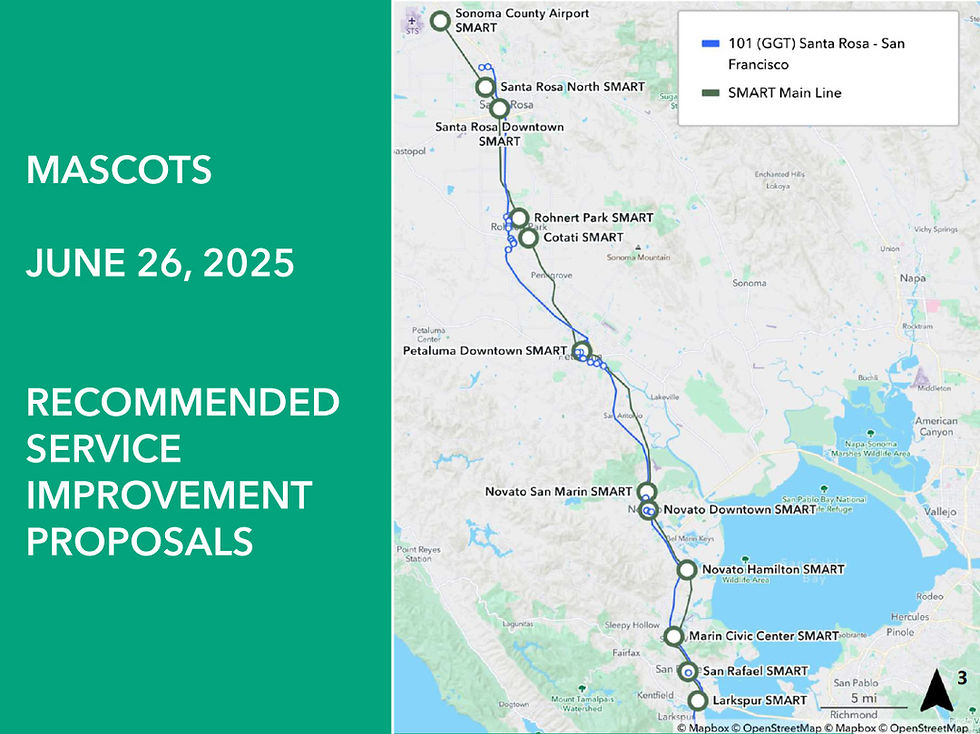Analyzing the stats on SMART
- Friends of Smart
- Jan 27, 2020
- 2 min read
Willard Richards
Friends of SMART
January 27, 2020

I just finished reading Rich Harkness’ 36-page document reporting his analyses of the carbon dioxide emissions from SMART and the emissions that would occur if SMART ceased to be. His calculations give results quite similar to those recently published by SMART when he uses similar assumptions. His public statements are based on quite different assumptions.
Both the SMART and the Harkness calculations ignore joy riders. They both assume that all SMART riders would travel on Highway 101 if SMART did not exist. Below I call these Highway 101 riders displaced riders. Neither SMART nor Harkness include carbon dioxide emissions from constructing SMART in their calculations, but Harkness indicates this is an issue.
SMART assumed the displaced riders are all in cars and the vehicle occupancy is 1.08 people per car. When Harkness does the same calculation with 1.12 people per car, his estimates of SMART’s reduction in carbon dioxide emissions are similar to those recently reported by SMART.
Rich Harkness public statements are based on calculations in which some displaced riders are on Golden Gate buses and the remainder are in cars with an occupancy of 1.67 riders per car. The occupancy of 1.67 riders per car is certainly too high for displaced riders on Highway 101. Also, the demographics of Golden Gate bus riders that take trips within the two-county area served by SMART are quite different from the demographics of SMART riders. Therefore, I think it is unreasonable to assume that a significant fraction of the displaced riders will choose to ride by bus. Taking a bus does not avoid sitting in traffic.
The following comments on Rich Harkness’ bus calculations are included in case someone wants to discuss them. He assumes the current bus fleet will be replaced by 40-foot Gillig electric hybrid buses and they will use RD 99 Renewable fuel, which emits about one-third as much carbon dioxide over its life-cycle as petroleum-based fuel. He assumes the riders per bus will be the same as now, but comments it probably would increase. From his data I calculate 14 riders per bus on average.
It is possible to comment on other issues, but I believe the key issues are listed above and are adequate to explain to the public why Harkness’ calculations are biased against SMART. I believe the assumptions in SMART’s calculations are more appropriate, and that Rich Harkness calculations with similar assumptions indicate that SMART’s calculations were done correctly.



Comments